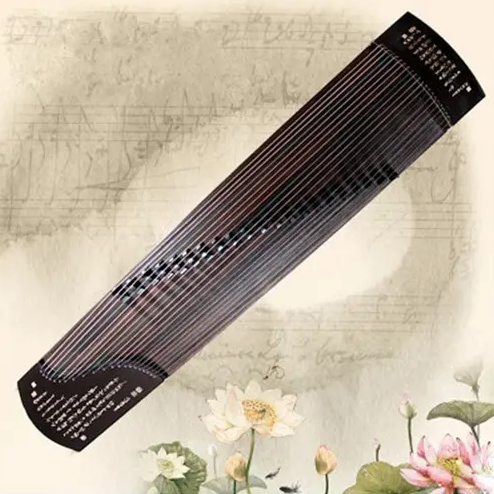The Difference Between Pipa, Guqin and Guzheng
Guqin is a man Guzheng is a woman Pipa is a little woman
The guzheng is delicate and melodious in tone. It is an atmospheric work like "General's Order" and "Battle Typhoon", but what is more outstanding is some gentleness. The slower rhythm works such as "The Fragrance of Jasmine" and "The Fishing Boat Sings Evening" have a beautiful timbre of the guzheng itself and are suitable for slow-rhythm songs. Such tunes are very charming and show the temperament of the guzheng incisively and vividly.
Guzheng is like a woman, with a gentle and delicate side, as well as a strong and stubborn side.
The guqin has a wide range of sounds and a rough and simple tone (compared to the guzheng), which is suitable for playing some high-level and far-reaching works such as "Guangling San" and "Pingsha Falling Wild Goose".
The pitch of Guqin is obviously lower than that of Guzheng, and the sound has strong continuity. Often one note can drive the overall atmosphere. Therefore, Guqin works often don’t have so many notes, the rhythm is slower, and there are more changes, which are thick and have a long aftertaste.

Pipa is not a prejudice. You can see that there are often a group of beautiful women lining up playing the pipa, which is very eye-catching.
Aside from certain factors, this is also determined by the characteristics of the pipa itself, and the graininess of the timbre of the pipa is stronger than that of the guzheng - her voice is very small. This characteristic also makes the songs played are very poignant, and most of them are children's love.
Of course, in my impression, Huanqin seems to be a relatively joyful piece, while others such as Pipa language are more desolate.
Involving musical instruments
Guess you like
Hot news
- 01 Ancient Legacy: The Legend of the creation of Emperor Shun and the Banjo
- 02 The handsome guy in 1997 is so advanced in pulling erhu! Netizen: Come and "wash your ears"
- 03 Dulcimer exam and performance repertoire
- 04 The difference between the five-stringed lute and the four-stringed lute
- 05 The Simple Difference Between Guqin, Se, and Guzheng
 渝公网安备 50010702504639号
渝公网安备 50010702504639号